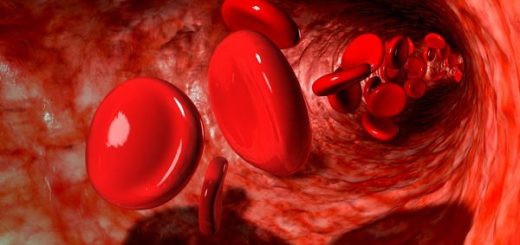High Fever and Poor Blood Oxygen Levels Linked to Acute Chest Syndrome in SCD, Study Says
IN NEWS.

Acute chest syndrome, a serious complication of sickle cell disease that can accompany a vaso-occlusive crisis, is more likely in SCD patients who run high fevers, and have low blood oxygen levels and poor spleen function during such crises, a study of hospital records suggests.
Other possible predictors of acute chest syndrome are a significant drop in hemoglobin levels and a significant rise in the number of white blood cells (leukocytosis), its researchers said.
The study, “Predictors of impending acute chest syndrome in patients with sickle cell anaemia,” was published in the journal Nature Scientific Reports.
Acute chest syndrome (ACS) is characterized by chest pain, cough, fever, hypoxia (low oxygen levels), and lung infiltrates (dense substance seen on chest X-ray) caused by sickling in the small blood vessels of the lungs.
ACS is is a common cause of death, often through respiratory failure or pneumonia, and the second most common reason for hospitalization among SCA patients, particularly among those already hospitalized for a vaso-occlusive crisis (VOC). (VOCs result when blood flow is obstructed by sickled red blood cells, causing injury to organs and considerable pain.)
Several causes are associated with the development of ACS, but a U.S. study identified a number risk factors that include infections (bacterial, viral and others), thrombosis (formation of blood clots), and fat and pulmonary embolism (lodging of a fat molecule in the blood circulating through the lung).
In an estimated 50% of patients, however, no clear cause for ACS’ development can be identified.
A group of researchers in Oman — a country where SCD is “highly prevalent” — set out to assess risk factors that predispose SCA patients to ACS, as well as to identify predictors of severity.
“Our aim was to study the risk factors that lead to the development of ACS, as determining the risk factors will help in identifying patients at risk early, thereby directing special attention towards them to prevent adverse outcomes,” the researchers wrote.
They conducted a retrospective study of patient information attained from electronic medical records at Sultan Qaboos University Hospital.
These records covered 92 sickle cell patients treated for a total of 100 VOCs, and identified through discharge summaries as having also had acute chest syndrome
Twenty other SCD patients hospitalized for total of 20 “simple” VOCs, a crises without ACS as a complication, served as controls.
Results indicated that a higher fever (over 38.5°C, or 101.3°F), crepitation (a crackling sound heard on a stethoscope during breathing), and low oxygen saturation levels in the blood (less than 95%) were associated with significantly higher odds of ACS compared to control patients.
Abdominal ultrasound results also pointed to a significantly higher degree of asplenia (an “absent spleen,” meaning lack of normal spleen activity) in ACS patients compared to controls.
Pleural effusions (excess fluid in the lungs) and multi-lobar atelectasis (the collapse of multiple lobes of lung tissue with loss of volume) were also significantly more common in ACS cases than in SCD without this syndrome.
The majority of patients with ACS required a simple blood transfusion (63% vs. 20% in control group) or an exchange transfusion (66.3% vs. 10%).
A simple blood transfusion is the adding of donated blood or blood products without removing blood from the recipient, while an exchange transfusion removes a patient’s blood and replaces it with donated blood or blood products.
“Simple and exchange transfusions are considered to be lifesaving in ACS patients as they improve oxygenation and reduce sickled RBCs and have other possible potential advantages,” the researchers wrote.
Non-invasive ventilation, or breathing support administered through a face or nasal mask, was also given to 16.3% of patients with ACS, and to no one in the control group.
SCD patients treated in a hospital for acute chest syndrome have much more severe disease, as reflected by greater use of ventilation, simple and exchange blood transfusions, and the presence of bilateral pleural effusions and multi-lobar atelectasis compared to hospitalized patients who do not develop ACS.
Laboratory results indicated that hemoglobin nadirs (the lowest point of hemoglobin concentration) and maximal white blood cell counts were significantly different between the two groups. Essentially, those with ACS had lower hemoglobin levels and higher white blood cell counts compared to other patients.
“Our study demonstrated that high fever, reduced O2 saturation, and asplenia were associated with a high probability for predicting ACS during VOC episodes,” the researchers wrote.
“Validating and confirming these findings may form the basis for creating a score for patients with VOC who are likely to develop ACS during their initial assessment at the time of admission,” they concluded.Iqra Mumal, MSc




Recent Comments